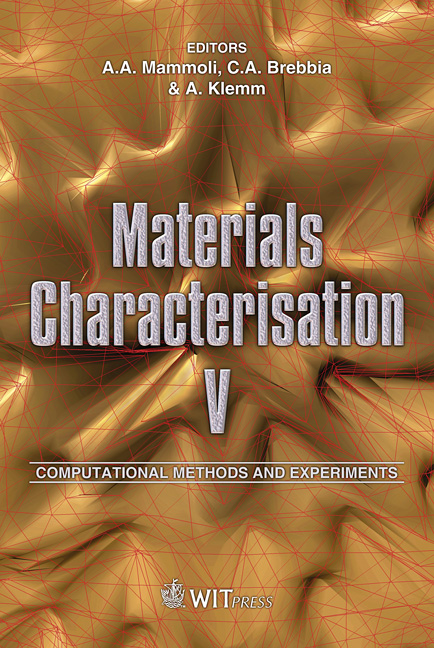A Multi-factor Interaction Model (MFIM) For Damage Initiation And Progression
Price
Free (open access)
Transaction
Volume
72
Pages
10
Page Range
109 - 118
Published
2011
Size
677 kb
Paper DOI
10.2495/MC110101
Copyright
WIT Press
Author(s)
C. C. Chamis
Abstract
A Multi-Factor-Interaction-Model (MFIM) is briefly described to represent complex point material behavior in a single equation. The model is of product form in order to represent coupled interactions and to be computationally effective. The model describes a continuum or surface in space that represents the complex material behavior in terms of the various factors that affect a specified material behavior. The material specified behavior is inclusive of all material properties, mechanical, thermal, physical and effects thereon, such as temperature, time, cyclic loadings, etc. Sample case results simulated by using MFIM are compared with test data to illustrate its versatility and its relevance to reality. These results show that the MFIM can accurately predict metal matrix composite fatigue data and mechanical properties of a steel alloy. Helpful guidelines for its effective use are also included. Keywords: material properties, high temperature, nonlinearities. 1 Introduction The simulation of complex material behavior resulting from the interaction of several factors (such as temperature, nonlinear material due to high stress, time dependence, fatigue, etc), has been mainly performed by factor-specific representations. For example, entire text books are devoted to plasticity, creep, fatigue and high strain rate to mention only a few. Investigators have derived equations that describe material behavior for each factor-specific effect. Suppose we visualize that the material behavior is a continuum represented by some surface. Then, we can think of some representation which describes that surface which is inclusive of all participating factors that affect material behavior either singly or interactively in various combinations. To that end, research has
Keywords
material properties, high temperature, nonlinearities





